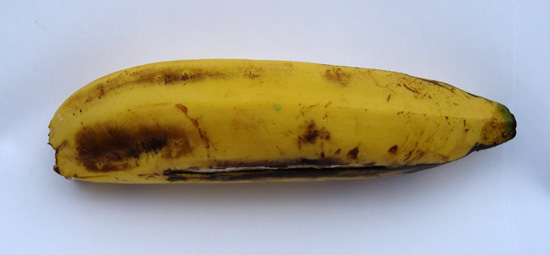The Rainforest Alliance is tooting its own horn about the value of bananas as a teaching tool, in an item about its ideas for using the banana as a basis for several school activities. Intended for young children in non-tropical countries, the ideas struck me as pretty entertaining, and infinitely expandable. Bananas as the basis of surveys and measurement, geography, history, even a bit of botany. There are other possibilities too, only hinted at or completely ignored. But wouldn’t it be cool if other crops were used this way, not as object lessons in themselves, but as the basis for studying all sorts of things?

That, by the way, is Gros Michel, which I had the pleasure of tasting for the first time earlier this year. Just the shift from Gros Michel to Cavendish opens up all sorts of pedagocic possibilities.